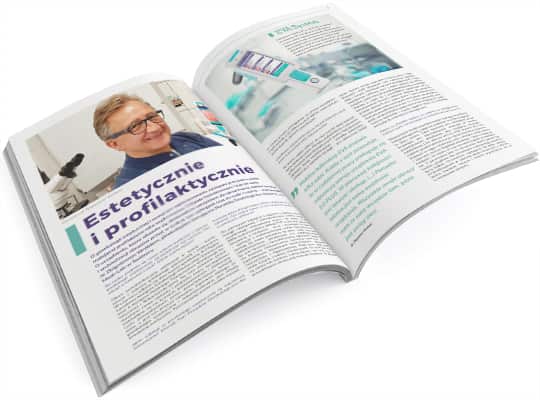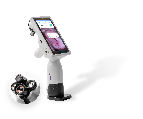We spoke with Dr. Zbigniew Wróbel, Director of the Medi-Lab Obstetrics and Gynecology Clinic in Świdnica, Poland, about how the field is developing in Poland.

How has the Polish medical profession reacted to the trend toward aesthetic gynecology?
This year saw a number of conferences addressing the issue of plastic and aesthetic gynecology. In June, there were two important meetings: the 3rd International Congress of Plastic and Aesthetic Gynecology (held in Jozefow near Warsaw) and the 2nd Congress of the Polish Society of Aesthetic and Reconstructive Gynecology. The latter presented new methods and practices, which were taught in depth in basic and continuing education courses conducted by an experienced specialist. As a relatively ‘young’ field of medicine, there are fewer experts to provide training in the field of aesthetic and reconstructive gynecology. This just emphasizes the importance of attending professional events such as these to receive full training.
The Medi-Lab Obstetrics and Gynecology Clinic, which you head, offers a number of aesthetic procedures. How were these services developed?
Some of our first procedures were for the treatment of stress urinary incontinence. From 2002 to 2006, we performed the TVT procedures using prolene tape, moving into using mesh as the method developed. We made every effort to stay current with the latest innovations in the field.
We’ve seen new modalities such as laser treatment, or the use of radio frequencies, ultrasound and electro stimulation introduced. They are employed along with pharmacotherapy, hyaluronic acid filling, botulinum, platelet-rich plasma, and stem cells, and supplemented by exercises with a physical therapist.
While we are satisfied that our existing treatment regime is giving our patients the best possible available outcomes, we are always exploring new methods as they become available to enhance our service.
Stress urinary incontinence is only one aesthetic gynecological issue that can affect women. What other forms of aesthetic treatment do you perform regularly?
We have been successfully treating dystrophic vulvar conditions. Vulvar lichen sclerosus is one area which we have been focusing on in recent years.
The most common symptom of lichen sclerosus, an autoimmune disease of unknown etiology, can cause persistent itching of the vulva. The areas that are primarily affected are the genital skin and mucosa, and the condition usually co-exists with other autoimmune diseases.
The disease is associated with chronic dermatitis, with the formation of numerous erosions, cracks, scarring, and skin fistulas and atrophy. A frequent effect is also atrophy of the lesser pudendal lips as well as of the mucosa of the vaginal atrium. This, in turn, causes the contraction and distortion of the lesser pudendal lips, displacement of the clitoris, and skin inflammations, and can progress to require surgical intervention.
Has the media attention given to aesthetic gynecology helped boost awareness of other gynecological issues?
Surprisingly not. Looking at women’s increasing awareness of the options in aesthetic medicine and aesthetic gynecology, it is extremely puzzling that the number of women coming for preventative screening examinations, such as for cervical or breast cancer, is decreasing.
It is a shame that the same media attention given to aesthetic gynecology is not being given to lifesaving preventative measures.

What is the state of cervical cancer screening in Poland?
Unfortunately, a program contacting women individually with information about local screening options was discontinued in 2015. Today approximately 3,500 Polish women are diagnosed with cervical cancer every year. The survival rate is only 1 in 2. In most of the fatal cases, the patient simply delayed seeking medical care until cancer had progressed.
Many Polish women feel that they ‘don’t have time’ for routine screening. Only 22% of eligible women received routine screening, a rate that has decreased by 6%-7% in recent years.
How can Polish medical professionals meet this challenge and encourage more women to receive cervical cancer screening and treatment?
We must use the most up to date methods to both, screen for cancer and to educate women about the need for screening.
Are there any particular technologies that you have incorporated into your practice?
We started using the EVA System mobile colposcope for both the standard colposcopy and to offer images to patients undergoing aesthetic procedures. I now use the EVA System on a daily basis. The device itself is very easy to use and easily transported. I get a lot of benefit from the online portal where images are stored. I’m able to have access to the images I’ve captured anywhere. This gives me great flexibility in my practice. It is particularly important to patients that we capture good quality images to help them understand the medical procedure they are undergoing.
The EVA System is available in Poland through distributors Mobile ScanMed Systems

What would you like to see in the future?
I hope that we will be able to use this technology to extend cervical cancer screening. The EVA System allows less experienced doctors to remotely consult with experts as they consult colposcopies. This, in turn, combined with liquid-based cytology, and HPV testing, should become the standard for cervical cancer screening.
This interview was translated from Polish. Read the original text here







